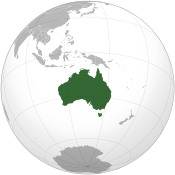APEC leaders wear Driza-Bones for group photo
Saturday, September 8, 2007

Image: APEC 2007 Taskforce..

Image: APEC 2007 Taskforce..
Leaders attending the APEC summit in Sydney, Australia have worn Driza-Bone coats for their traditional group photo in front of the Sydney Opera House. In APEC tradition, leaders wear attire which draws inspiration from the host nation's national costume.
Australia's choice was made by Prime Minister John Howard and his wife Janette. Australia does not have a national costume. In an APEC statement it was revealed that Driza-Bone had been consulted to produce an outfit that "captures the essence of Australia's culture and environment."
"Driza-Bone coats were born over 100 years ago when a sailor fashioned waterproof coats out of windjammer sails for protection against the harsh Australian trade winds," the statement said.
"These coats were also perfect for people working on the vast Australian continent and have since been adapted into the perfect riding and outback attire."
The custom-made knee-length coats worn by the leaders were the traditional dark brown of all Driza-Bones and had differing colours for the lapels and linings - slate blue for Australia's vast coastline, mustard yellow for the sun and sand; red ochre for the outback and eucalyptus green for the bush. Leaders were given the choice over which highlight colour they wanted.
The choice of costume was a closely guarded secret by Australia officials, with speculation rife throughout the media. It has been suggested that the costume could include "budgie smugglers" (male swimwear)- and thongs (flip flops) to represent the beach;blue singlets and shorts favoured by labourers or khaki gear in memory of Steve Irwin.
The group photo is said to be one of the most anticipated parts of the APEC summit, with people wanting to see which leader looks the "silliest". In the past leaders have been dressed in silk tunics, leather bomber jackets and Batik-print shirts.
Sources
[edit]- "Decked out in Driza-Bones" — Herald Sun, September 8, 2007
- "APEC leaders' attire: Brown coats, with a flash of Australian color" — International Herald Tribune, September 8, 2007
- "APEC leaders dress for weather in outback raincoats" — Reuters India, September 8, 2007
- "World leaders look sheepish in Aussie coats" — AFP on Google, September 8, 2007
- Phillip Hudson. "Revealed: Our national dress" — Sydney Morning Herald, September 8, 2007



